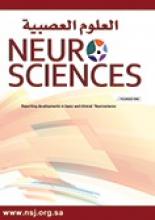10 August 2021 Statement - WHO, with support of the Strategic Advisory Group of Experts (SAGE) on Immunization and its COVID-19 Vaccines Working Group, is reviewing the emerging evidence on the need for and timing of an additional vaccine dose (booster dose 1) for the currently available COVID-19 vaccines which have received Emergency Use Listing (EUL). SAGE is continuously reviewing the literature and has reached out to vaccine manufacturers, the research community and Member States to obtain the most complete and recent data on the issue.
Rationale for booster doses
There are several reasons why COVID-19 vaccine booster doses may be needed: (i) waning protection against infection or disease, in particular severe disease, over time (i.e., waning immunity), (ii) reduced protection against variant(s) of concern (VOC), or (iii) inadequate protection from the currently recommended primary series for some risk groups for which evidence from the Phase 3 clinical trials may have been lacking. The rationale for booster doses may differ by vaccine product, epidemiological setting, risk group, and vaccine coverage rates.
Factors to consider
1. Waning immunity
Neither an immune correlate of protection nor an immune correlate for the duration of protection has been established to date. Studies suggest a correlation between the efficacy of different vaccines against symptomatic disease and mean neutralizing antibody titers induced by those vaccines(1), but it is unclear if declining titers over time since vaccination are indicative of declining vaccine effectiveness, especially against VOCs. While data on immunogenicity of some vaccines suggest that antibodies persist for at least 6 months (2), waning of neutralizing antibodies has been reported(3). Although there may be a loss of protection against infections by SARS-CoV-2 protection against severe disease is likely to be largely retained due to cell mediated immunity (1).
2. Vaccine effectiveness
Data are currently insufficient to determine if there is a significant decline in vaccine effectiveness against any form of clinical illness from SARS-CoV-2 infection beyond 6 months after vaccination. However, some reduction in vaccine effectiveness has been reported for some VOCs. Data from Israel suggest that around 40% of breakthrough infections are in immunocompromised individuals (4). While breakthrough infections are still expected, the vast majority are less severe than those seen in unvaccinated people (5).
3. Global vaccine supply and global and national equity
National vaccination programme policy decisions to add a booster dose should take into account the strength of evidence regarding the need for these doses and global availability of vaccines. Offering booster doses to a large proportion of a population when many have not yet received even a first dose undermines the principle of national and global equity. Prioritizing booster doses over speed and breadth in the initial dose coverage may also damage the prospects for global mitigation of the pandemic, with severe implications for the health, social and economic well-being of people globally.
Data needs for policy
The introduction of booster doses should be evidence-driven. The duration of vaccine-induced protection is likely to depend on many variables, such as the vaccine product, the primary vaccination schedule, the age and/or underlying medical conditions of the vaccinee, risk of exposure, and circulation of specific variants. The decision to recommend a booster dose is complex and requires, beyond clinical and epidemiological data, a consideration of national strategic and programmatic aspects, and importantly an assessment of the prioritization of globally limited vaccine supply. In this context, prioritization should be given to the prevention of severe disease. Data needs can be grouped into the following categories:
1. Assessing the need for booster doses:
Epidemiology and burden of disease
Epidemiology of breakthrough cases and disease severity by age, co-morbidity and risk groups, exposure, type of vaccine and time since vaccination, and in the context of variants of concern (VOCs).
Vaccine-specific data
Efficacy, effectiveness, duration of protection of vaccines in the context of SARS-CoV-2 wild-type and VOCs from observational studies and randomized controlled trials.
Supplementary evidence from immunological studies assessing neutralizing antibodies over time, as well as biomarkers of cellular immunity when possible.
2. Assessing the performance of booster doses
Immunogenicity, efficacy, effectiveness and duration of protection of original and variant-adapted vaccine booster doses in the context of SARS-CoV-2 wild-type and VOCs.
Safety and reactogenicity.
3. Additional considerations:
Optimal timing of the booster dose, consideration of homologous versus heterologous boosters, possibility for dose-sparing for booster doses, booster needs in previously infected individuals, specification and prioritization of high-risk populations, programmatic feasibility and sustainability, promotion of global equity.
Conclusions
In the context of ongoing global vaccine supply constraints, administration of booster doses will exacerbate inequities by driving up demand and consuming scarce supply while priority populations in some countries, or subnational settings, have not yet received a primary vaccination series. The focus for the time being remains on increasing global vaccination coverage with the primary series (either one or two doses for current EUL vaccines).
Introducing booster doses should be firmly evidence-driven and targeted to the population groups in greatest need. The rationale for implementing booster doses should be guided by evidence on waning vaccine effectiveness, in particular a decline in protection against severe disease in the general population or in high risk populations, or due to a circulating VOC. To date, the evidence remains limited and inconclusive on any widespread need for booster doses following a primary vaccination series. WHO is carefully monitoring the situation and will continue to work closely with countries to obtain the data required for policy recommendations.
Available from: https://www.who.int/news/item/10-08-2021-interim-statement-on-covid-19-vaccine-booster-doses
- Copyright: © Neurosciences
Neurosciences is an Open Access journal and articles published are distributed under the terms of the Creative Commons Attribution-NonCommercial License (CC BY-NC). Readers may copy, distribute, and display the work for non-commercial purposes with the proper citation of the original work.






